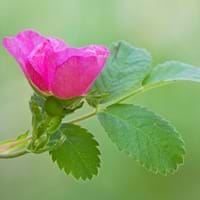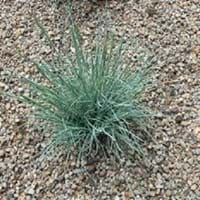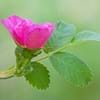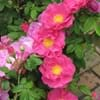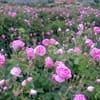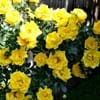Life Span
Perennial
Perennial
Type
Flowering Plants, Ornamental Plant, Perennial
Grass
Origin
California, Caribbean, Mexico
World/Pandemic
Types
Not Available
Large Blue Fescue , Sea Urchin Blue Fescue, Elijah Blue blue fescue
Habitat
Chaparral, Foot Hills, Woodlands
Moist Soils, Rocky areas, Well Drained
USDA Hardiness Zone
Not Available
4-9
AHS Heat Zone
Not Available
Not Available
Sunset Zone
Not available
Not Available
Habit
Upright/Erect
Clump-Forming
Flower Color
Variety of colors
Not Available
Flower Color Modifier
Bicolor
Bicolor
Fruit Color
Non Fruiting Plant
Not Available
Leaf Color in Spring
Gray, Gray Green
Not Available
Leaf Color in Summer
Gray, Gray Green
Light Green
Leaf Color in Fall
Gray, Gray Green
Not Available
Leaf Color in Winter
Gray, Gray Green
Not Available
Leaf Shape
Pinnate
Grass like
Plant Season
Spring, Summer, Fall
Not Available
Sunlight
Full Sun, Partial Sun
Full Sun, Partial Sun
Growth Rate
Medium
Not Available
Type of Soil
Loam, Sand
Clay, Loam, Sand
The pH of Soil
Acidic, Neutral
Acidic, Neutral
Soil Drainage
Well drained
Average
Bloom Time
Spring, Late Spring, Early Summer, Summer, Late Summer, Early Fall, Fall
Not Available
Repeat Bloomer
Not Available
Not Available
Tolerances
Drought
Not Available
Where to Plant?
Container, Ground, Pot
Container, Ground
How to Plant?
Cuttings
Seedlings
Plant Maintenance
Medium
Medium
Watering Requirements
Average Water Needs
Requires regular watering
In Summer
Lots of watering
Lots of watering
In Spring
Moderate
Moderate
In Winter
Average Water
Average Water
Soil pH
Acidic, Neutral
Acidic, Neutral
Soil Type
Loam, Sand
Clay, Loam, Sand
Soil Drainage Capacity
Well drained
Average
Sun Exposure
Full Sun, Partial Sun
Full Sun, Partial Sun
Pruning
Remove damaged leaves, Remove dead branches, Remove dead leaves
Cut or pinch the stems, Remove damaged leaves, Remove dead leaves, Remove dead or diseased plant parts
Fertilizers
All-Purpose Liquid Fertilizer
Apply 10-10-10 amount
Pests and Diseases
Beetles, Black Spot, Caterpillars, Downy mildew, Mosaic viruses, Powdery mildew, Rust, Scale insects, Thripes
Red blotch
Plant Tolerance
Drought
Not Available
Flowers
Showy
Insignificant
Flower Petal Number
Double
Single
Edible Fruit
Not Available
No
Showy Foliage
No
Not Available
Foliage Texture
Medium
Fine
Foliage Sheen
Glossy
Matte
Invasive
Not Available
Sometimes
Self-Sowing
Not Available
Yes
Attracts
Birds, Butterflies
Birds, Butterflies
Allergy
Rash
Not Available
Aesthetic Uses
Showy Purposes
Ground Cover
Beauty Benefits
Not Available
Not Available
Environmental Uses
Air purification
Air purification, Provides ground cover
Medicinal Uses
Not Available
Not Available
Part of Plant Used
Flowers
Flowers, Seeds
Other Uses
Oil is used in perfume, soaps, creams, etc.
Used as Ornamental plant
Used As Indoor Plant
Yes
Insignificant
Used As Outdoor Plant
Yes
Yes
Garden Design
Container, Cutflower, Feature Plant, Foundation, Mixed Border, Topiary / Bonsai / Espalier
Edging, Groundcover, Lawns and Turf, Mixed Border, Rock Garden / Wall
Botanical Name
Rosa californica
FESTUCA
Common Name
California wildrose, California rose
Blue Fescue, Field Fescue
In Hindi
कैलिफोर्निया गुलाब
ब्लू हुक्म
In German
Kalifornische Hecken-Rose
blau -Schwingel
In French
Le rosier de Californie
bleu fétuque
In Spanish
Rosa californica
azul festuca
In Greek
Καλιφόρνια αυξήθηκε
μπλε Φεστούκα
In Portuguese
California aumentou
azul festuca
In Polish
California róży
niebieski Kostrzewa
In Latin
California resurrexit
blue Fescue
Phylum
Magnoliophyta
Magnoliophyta
Class
Magnoliopsida
Liliopsida
Clade
Not Available
Angiosperms, Commelinids, Monocots
Tribe
Not Available
Poeae
Subfamily
Not Available
Pooideae
Number of Species
Not Available
Properties of California Rose and Blue Fescue
Wondering what are the properties of California Rose and Blue Fescue? We provide you with everything About California Rose and Blue Fescue. California Rose has thorns and Blue Fescue doesn't have thorns. Also California Rose does not have fragrant flowers. California Rose has allergic reactions like Rash and Blue Fescue has allergic reactions like Rash. Compare all the properties and characteristics of these two plants. Find out which of these plant can be used as indoor plant. If you are interested to decorate your house and garden, find out aesthetic uses, compare them and select the plant which will beautify your surrounding. Along with beautification, try comparing medicinal and edible uses of California Rose and Blue Fescue and you can choose the plant having best and most benefits.
Season and Care of California Rose and Blue Fescue
Season and care of California Rose and Blue Fescue is important to know. While considering everything about California Rose and Blue Fescue Care, growing season is an essential factor. California Rose season is Spring, Summer and Fall and Blue Fescue season is Spring, Summer and Fall. The type of soil for California Rose is Loam, Sand and for Blue Fescue is Clay, Loam, Sand while the PH of soil for California Rose is Acidic, Neutral and for Blue Fescue is Acidic, Neutral.
California Rose and Blue Fescue Physical Information
California Rose and Blue Fescue physical information is very important for comparison. California Rose height is 150.00 cm and width 150.00 cm whereas Blue Fescue height is 15.24 cm and width 25.40 cm. The color specification of California Rose and Blue Fescue are as follows:
California Rose flower color: Variety of colors
California Rose leaf color: Gray and Gray Green
Blue Fescue flower color: Not Available
- Blue Fescue leaf color: Not Available
Care of California Rose and Blue Fescue
Care of California Rose and Blue Fescue include pruning, fertilizers, watering etc. California Rose pruning is done Remove damaged leaves, Remove dead branches and Remove dead leaves and Blue Fescue pruning is done Cut or pinch the stems, Remove damaged leaves, Remove dead leaves and Remove dead or diseased plant parts. In summer California Rose needs Lots of watering and in winter, it needs Average Water. Whereas, in summer Blue Fescue needs Lots of watering and in winter, it needs Average Water.
